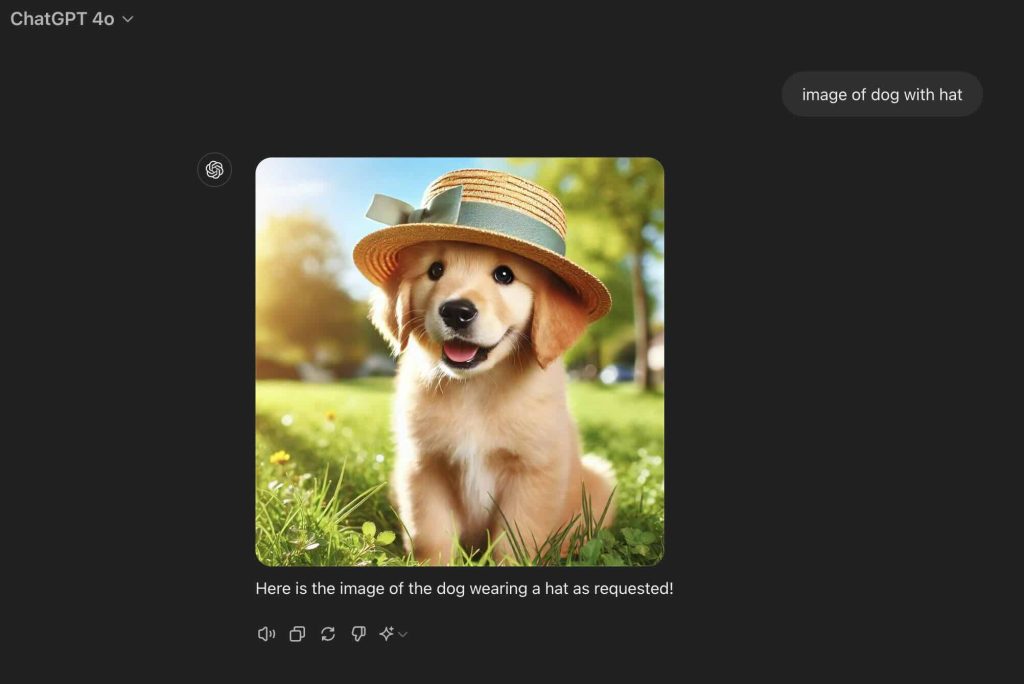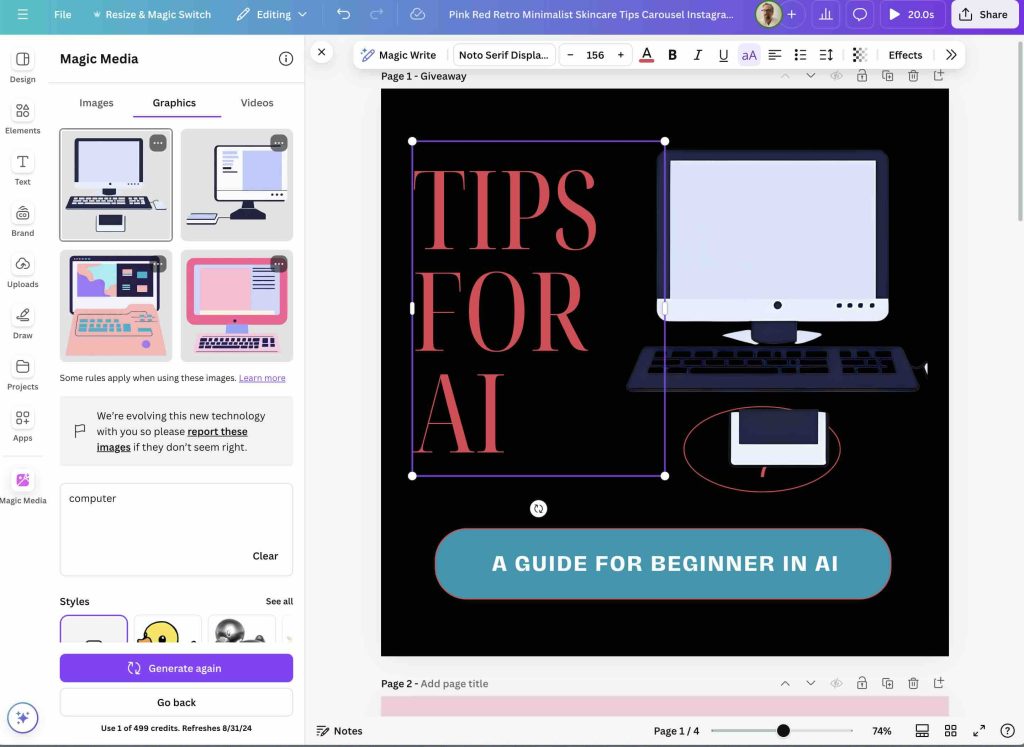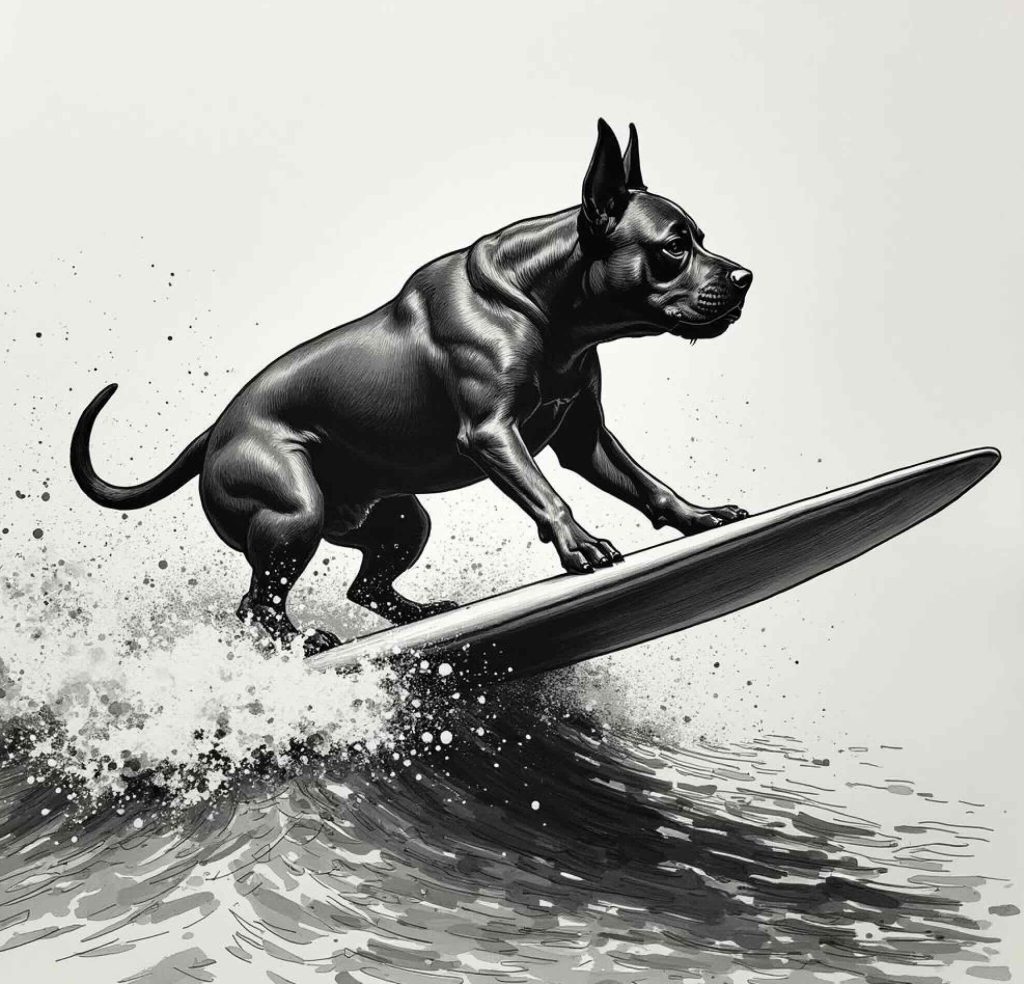AI Image Generation Is Transforming Visual Content Creation in 2024
In today’s rapidly evolving digital landscape, AI image generation has emerged as a game-changing technology, revolutionizing how we create and interact with visual content. Whether you’re a business professional looking to enhance your marketing materials, a student seeking to illustrate complex concepts, or a creative exploring new artistic frontiers, understanding AI image generation opens up a world of possibilities.
AI image generation refers to the process of creating new visual content using artificial intelligence technologies. Think of it as having a highly skilled digital artist at your fingertips, capable of producing images based on your descriptions or inputs in mere seconds.
To better understand this concept, imagine a magical sketchbook. You describe what you want to see, and the pages come alive with exactly what you’ve envisioned. That’s essentially what AI image generation does, but in the digital realm.
The AI behind image generation primarily relies on sophisticated deep learning models, specifically Generative Adversarial Networks (GANs) and diffusion models.
Imagine a master artist (the generator) creating paintings, while an art critic (the discriminator) provides feedback. Through countless iterations, the artist improves, learning to create increasingly realistic and impressive works.
Diffusion models work differently. They start with random noise and gradually refine it into a clear image, similar to how a photographer might slowly bring an image into focus in a darkroom.
These AI models are trained on vast datasets of images, learning patterns, styles, and the relationships between visual elements and textual descriptions. This training allows them to generate new, unique images based on text prompts or other inputs.
Several AI tools have emerged as leaders in the image generation and generative AI space, each with its own strengths and unique features:
DALL-E 3: Developed by OpenAI. DALL-E 3 is integrated with ChatGPT, allowing users to generate images directly within the ChatGPT interface. This integration makes it easier for users to brainstorm ideas and refine prompts with the help of ChatGPT before generating images.

Use case: Creating unique marketing visuals for product launches
Midjourney: Excels in producing artistic and often surreal imagery. This tool is generally a more advance ai image generation tool because of the UI is mostly texted based within Discord app.

Use case: Generating conceptual art for video game environments
Stable Diffusion: This open-source AI image generation tool, designed for advanced users and requiring setup of auxiliary software like Automatic1111 and ComfyUI, can be run locally on personal computers, offering both flexibility and customization options while harnessing significant computational power.

Use case: Developing customized image generation solutions for businesses
Canva’s Text to Image: Integrated into the popular design platform Canva, allowing users to generate images within their design projects

Use case: Quickly creating graphics for social media posts and presentations
Having AI image generation tools is akin to having an entire visual content creation department at your beck and call 24/7, ready to produce anything from quick concept sketches to polished final artwork. These AI tools offer a spectrum of creative possibilities, each with its own unique strengths and artistic signatures, available at a moment’s notice.
| Aspect | AI Image Generation | Traditional Design |
|---|---|---|
| Speed | Seconds to minutes | Hours to days |
| Cost | Generally lower | Varies widely |
| Customization | Improving rapidly | High |
| Originality | Can be unpredictable | Controlled by designer |
| Learning Curve | Moderate (prompt engineering) | Steep (design software) |
While AI image generators have revolutionized visual content creation, they do come with certain limitations and ethical considerations that users should be aware of:
Think of these limitations as the “fine print” on a powerful new tool. Just as a high-end camera doesn’t automatically make someone a professional photographer, AI image generators are tools that require understanding and responsible use to achieve the best results.
For those looking to master AI image generation, consider these advanced techniques:
Customizing AI-generated images is a bit like being a film director. You have a vision, and you’re using various tools and techniques to bring that vision to life. The AI is your highly skilled, but sometimes unpredictable, creative team. The more effectively you can communicate your vision (through prompts and settings), the closer the final result will be to what you imagined.
As we look ahead at visual content creation, several exciting developments are on the horizon:
AI image generation is not just a technological novelty; it’s a powerful tool reshaping how we create and interact with visual content across industries. As the generative AI technology continues to evolve, staying informed and adaptable will be key to leveraging its full potential in your projects and businesses. We call this becoming AI literate, which we think is imperative to remain or become relevant in the future as AI tools like image generation become more significant.
While AI image generation offers incredible opportunities, it’s important to use these tools responsibly, considering both their capabilities and limitations. By understanding the technology, honing your skills in prompt engineering, and staying updated on the latest developments (see CO/AI News feed), you can improve the power of AI image generation to bring your creative visions to life in ways never before possible.
Join CO/AI community to gain insights into AI developers tools. Listen to CO/AI’s Future-Proof Podcast. If you are AI founder learn more about our partnership program.

FLUX.1 [pro] Image generation example
Key Features of AI Image Generation
How Does AI Image Generation Work?
Popular AI Image Generation Tools in 2024
AI Image Generation vs. Traditional Design: A Comparative Analysis
Practical Applications of AI Image Generation
Limitations and Ethical Considerations in AI Image Generation
Advanced Techniques in AI Image Generation
The Future of AI Image Generation: Trends and Predictions
| 1 | Midjoureny Best in class text-to-image tool. Imagine making anything |
| 2 | Leonardo Create high-quality visuals from text prompts, edit designs, generate 3D textures, |
| 3 | Photoroom AI-powered photo editing platform that simplifies professional-grade editing for all users. |
| 4 | Flux Flux, the largest SOTA open source text-to-image model, developed by Black Forest Labs |
| 5 | RunwayML AI-powered creative tools for artists, filmmakers, and content creators to generate and edit videos and images. |
| 6 | Picsart Create, edit, and enhance visuals with tools for photos, videos, and AI-driven design. |
| 7 | DreamStudio Generate custom, high-quality images from text prompts using an intuitive web interface UI |
| 8 | Canva AI Image Generator creates and edits images from text prompts, integrating with Canva’s design tools. |
| 9 | Adobe Express AI-powered design and video editing platform that enables users to create stunning visuals, videos, and graphics effortlessly. |
| 10 | Dalle-3 Generates highly detailed images from text prompts, integrated with ChatGPT for conversational refinement. |
| 1 | Flux New open source model generating images better than Midjourney. |
| 2 | Midjourney UI is stuck Discord, but the images it generates are stunning |
| 3 | Leonardo Great UI/UX, lots of features, models gets better daily |
| 4 | Magnific upscales and enhances images using generative AI, adding detail for pro and amateur creatives. |